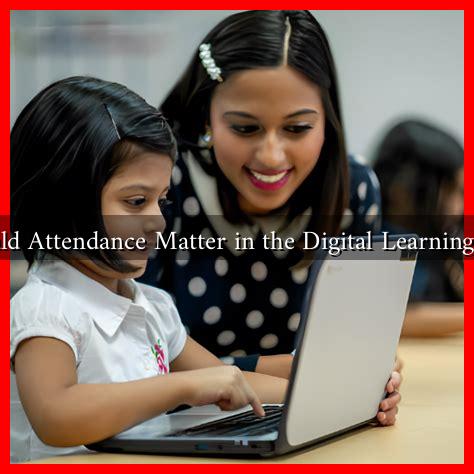-
Table of Contents
Should Attendance Matter in the Digital Learning Era?
As education continues to evolve in the digital age, the traditional metrics of success are being re-evaluated. One of the most contentious issues is the importance of attendance in online learning environments. With the rise of remote education, particularly accelerated by the COVID-19 pandemic, educators, students, and parents are questioning whether attendance should still be a priority. This article explores the implications of attendance in digital learning, weighing its significance against the backdrop of flexibility and accessibility.
The Shift to Digital Learning
The transition to digital learning has transformed how education is delivered and consumed. According to a report by the National Center for Education Statistics, over 30% of college students were enrolled in at least one online course in 2020. This shift has brought about new challenges and opportunities, prompting a reevaluation of traditional attendance policies.
Why Attendance Has Traditionally Mattered
Historically, attendance has been a key indicator of student engagement and success. Here are some reasons why attendance has been emphasized:
- Engagement: Regular attendance is often correlated with higher levels of engagement in the learning process.
- Accountability: Attendance policies hold students accountable for their learning, encouraging them to take their education seriously.
- Social Interaction: In traditional settings, being present fosters social connections and collaborative learning.
The Case for Flexibility in Digital Learning
In the digital learning era, the rigid attendance policies of the past may not be as relevant. Here are some arguments for a more flexible approach:
- Asynchronous Learning: Many online courses offer asynchronous options, allowing students to learn at their own pace. This flexibility can lead to better retention and understanding of material.
- Diverse Learning Styles: Students have different learning preferences. Some may thrive in a self-directed environment, while others may need structured schedules.
- Life Circumstances: Factors such as work commitments, family responsibilities, and health issues can impact a student’s ability to attend live sessions.
Case Studies and Statistics
Several studies have highlighted the impact of attendance policies in online learning environments. For instance, a study published in the EDUCAUSE Review found that students who engaged with course materials at their own pace performed better than those who were required to attend live sessions. Additionally, a survey conducted by the Online Learning Consortium revealed that 70% of students preferred courses that allowed for flexible attendance options.
Challenges of Attendance in Digital Learning
While flexibility has its advantages, it also presents challenges:
- Self-Discipline: Students may struggle with self-motivation and time management without the structure of mandatory attendance.
- Isolation: The lack of physical presence can lead to feelings of isolation, which may affect mental health and academic performance.
- Equity Issues: Not all students have equal access to technology or a conducive learning environment at home, which can impact their ability to participate.
Finding a Balance
As we navigate the complexities of digital learning, it is essential to find a balance between attendance and flexibility. Here are some strategies that educators can implement:
- Hybrid Models: Combining synchronous and asynchronous learning can cater to diverse student needs.
- Engagement Metrics: Instead of strict attendance, focus on engagement metrics such as participation in discussions, completion of assignments, and interaction with peers.
- Support Systems: Providing resources for time management and study skills can help students thrive in a flexible learning environment.
Conclusion
In the digital learning era, the question of whether attendance should matter is complex. While traditional attendance policies have their merits, the flexibility offered by online education presents new opportunities for student engagement and success. By embracing a more nuanced approach that prioritizes engagement over mere presence, educators can foster a more inclusive and effective learning environment. Ultimately, the goal should be to empower students to take ownership of their education, regardless of their physical presence in a classroom.

